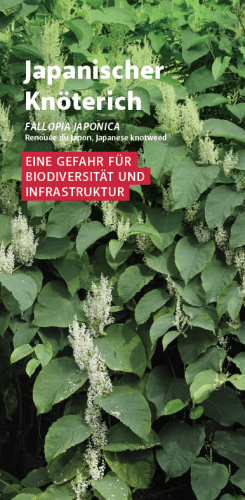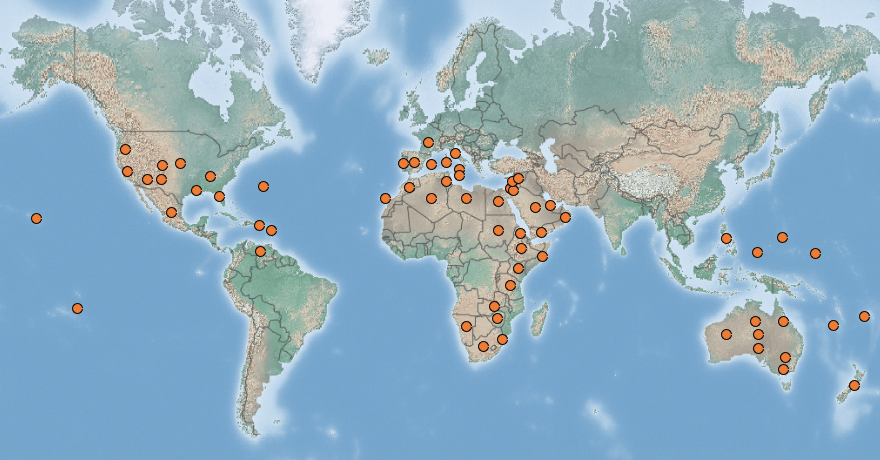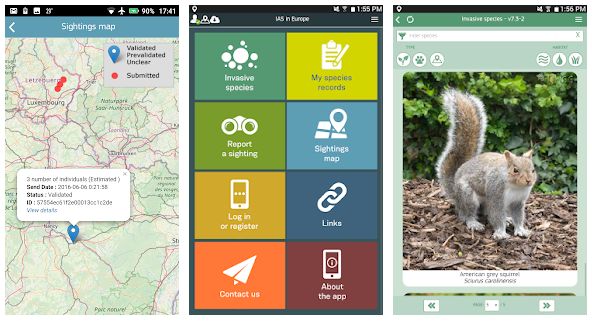 |
Marsh tick | Status LU: established. 1st record: 2015. |
 |
Suppenzeck | Status Eur.: expanding from SE-Europe. |
 |
n/a | RA: ISEIA: n/a. Harmonia+: n/a. |
 |
Auwaldzecke | Wikipedia: |
 |
n/a | Back to the list of invertebrates |
Contents
Brief description
 Dermacentor reticulatus Fabricius, 1794 is a species of tick within the Ixodidae family. It is the type species for the genus Dermacentor. D. reticulatus is an ornate tick. The female varies in size from 3.8–4.2 mm (unfed) to 10 mm when engorged after feeding. The unfed male is 4.2–4.8 mm long. D. reticulatus is found in Europe and Western Asia, generally in wooded areas. D. reticulatus is a vector of various disease organisms, including Babesia canis, Francisella tularensis, Coxiella burnetti, Theileria equi, and several Rickettsia species, such as Rickettsia slovaca (Wikipedia contributors, 2020).
Dermacentor reticulatus Fabricius, 1794 is a species of tick within the Ixodidae family. It is the type species for the genus Dermacentor. D. reticulatus is an ornate tick. The female varies in size from 3.8–4.2 mm (unfed) to 10 mm when engorged after feeding. The unfed male is 4.2–4.8 mm long. D. reticulatus is found in Europe and Western Asia, generally in wooded areas. D. reticulatus is a vector of various disease organisms, including Babesia canis, Francisella tularensis, Coxiella burnetti, Theileria equi, and several Rickettsia species, such as Rickettsia slovaca (Wikipedia contributors, 2020).
As a habitat, the marsh tick prefers humid areas such as riparian forests and moors as well as deciduous forests. Marsh ticks require a summer temperature of 20-22 °C and rainfall of 400-1000 mm. The ticks are cold-tolerant and can survive hard winters. Originally found in Hungary, Austria and northern Italy, the distribution area of the marsh tick has expanded strongly northwards since the 1970s. In Germany, the first natural population was described in 1973 on the Upper Rhine, and it was probably introduced by dogs. There are now free-ranging populations throughout Germany. Likely causes are an increase in natural biotopes, the associated increase in intermediate hosts, and global warming (Wikipedia Bearbeiter, 2020).
Status and distribution in Luxembourg
Records of Dermacentor reticulatus (Fabricius, 1794) in Luxembourg. Data source: Recorder-Lux, iNaturalist & GBIF, 2025-12-18.
Between 2015 and 2020, six Dermacentor ticks were collected in the south of Luxembourg. Previously, these individuals had been identified as Dermacentor marginatus Leach, 1815. However, morphological re-investigation as well as DNA barcoding identified the specimens as Dermacentor reticulatus Fabricius, 1794. Thus only D. reticulatus is known from Luxembourg (Weigand et al. 2020).
52 observations have been reported in the Recorder-Lux database so far (MNHNL, iNaturalist & GBIF 2022).
The public debate on ticks in Luxembourg
Ticks are a topic of discussion in Luxembourg, both by the authorities (e.g. Direction de la Santé 2016) and by the press (e.g. Weisbrodt 2021). Ticks are regularly the subject of parliamentary questions, e.g. the question on the tick Dermacentor reticulatus submitted by member of parliament Cécile Hemmen in April 2021.
Risk assessment
No risk assessments have been done to date.
Worldwide distribution
Bibliography
- Direction de la Santé, 2016. Attention aux tiques! Comment se protéger? Dépliant. Luxembourg. URL: https://sante.public.lu/fr/prevention/tiques/
- GBIF, 2020. Dermacentor reticulatus in GBIF Secretariat. GBIF Backbone Taxonomy. Checklist dataset https://www.gbif.org/species/2183432 [accessed 2020-11-02]
- Hemmen, C., 2021. Question parlementaire n°4143 de Madame Cécile Hemmen du 22 avril 2021 concernant la tique Dermacentor reticulatus au Luxembourg. [chd.lu]
- MNHNL, iNaturalist & GBIF, 2022. Dermacentor reticulatus in MNHNL-mdata, online portal combining species observation from Recorder-Lux, iNaturalist and GBIF. National Museum of Natural History, Luxembourg. URL: https://mdata.mnhn.lu [Accessed 2022-04-27]
- Weigand, A., J. Teixeira & S. Christian, 2020. First record of Hyalomma marginatum sensu stricto C.L. Koch, 1844 and distribution of Dermacentor reticulatus (Fabricius, 1794) (Acari, Ixodidae) in Luxembourg. Bull. Soc. nat. luxemb. 122 : 253-263. [PDF 1.79 MB]
- Weisbrodt, S., 2021. Une nouvelle espèce de tique menace les chiens / Insectes parasites [Dermacentor reticulatus]. L’essentiel du jeudi 2021-04-15: 6. URL: http://www.lessentiel.lu/fr/luxembourg/story/une-nouvelle-espece-de-tique-menace-les-chiens-13030864
- Wikipedia Bearbeiter, 2020. Auwaldzecke. In Wikipedia, Die freie Enzyklopädie. Bearbeitungsstand: 28. Oktober 2020, 06:23 UTC. URL: https://de.wikipedia.org/w/index.php?title=Auwaldzecke [accessed 2020-11-02]
- Wikipedia contributors, 2020. Dermacentor reticulatus. Wikipedia, The Free Encyclopedia. URL: https://en.wikipedia.org/wiki/Dermacentor_reticulatus [accessed 2020-11-02]
Page content last updated on 2022-04-28. Last proofread by Caroline Grounds on 2020-11-13.

















